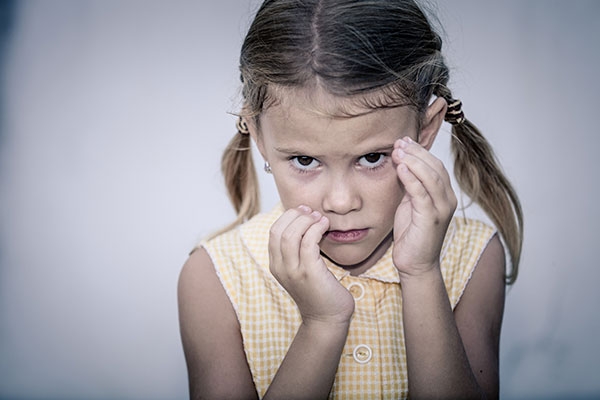
As we go from snow to sun and back again, nature’s transitions affect us all, but if you’ve noticed a consistent pattern of listless or depressive behavior in your child that waxes and wanes with the winter, Seasonal Affective Disorder may be to blame. Learn what it is, and how to help your little ones cope.
What is SAD?
Put simply, Seasonal Affective Disorder (SAD) is depression brought on by winter. According to the American Psychological Association (APA), around 500,000 people in the United States struggle with SAD, which appears to be triggered by the drop in daylight exposure that is part-and-parcel to winter months in many places around the globe. And kids aren’t immune.
Nobody’s yet sure of the exact cause, but scientists believe that decreased exposure to sunlight may throw internal clocks off kilter, according to the Cleveland Clinic. When this happens, hormone levels change and mood and sleep suffer, possible as a result of low Vitamin D. Kids living in places with long, dark winters, such as Alaska or the Pacific Northwest, may be particularly vulnerable.
Is it SAD or just a case of the blues?
Look for changes in behavior and mood that seem to keep consistent pace with the changing seasons. As winter begins, alterations in general mood, activity level, or sleeping and eating habits can all indicate the onset of SAD, according to healthykids.org. Is your child unusually irritable or easily upset? Has he or she lost interest in beloved hobbies, friendships or activities? Has a teacher noted a sudden drop in concentration or grades? Kids battling SAD may also sleep more than normal and struggle to get up for school in the morning. As for diet, keep an eye out for the munchies. Is your child requesting an inordinate amount of sweet, simple-carbohydrate-rich food? SAD may be the culprit.
How can I help my child cope with SAD?
Vitamins, exercise, and a dose of bright light may well do the trick. Begin by supplementing your child’s diet with a daily dose of vitamin D, suggests health and wellness expert Dr. Andrew Weil. Other potentially helpful vitamins and supplements include B vitamins, St. John’s wort and fish oil caplets. (Consult your doctor about dosages.)
You can also invest in a SAD light box for some at-home light therapy. The fluorescent bulbs deliver high doses of much-needed UV rays and are small enough to set up on a bedside table. A daily 30 minute session in front of the light is suggested by APA, but use caution: children shouldn’t stare directly at the light box.
Daily physical activity and corresponding exposure to natural winter light may be the best panacea of all for battling SAD, especially if symptoms are mild, adds Dr. Weil. Encourage your child to play in windowed areas of the house that get lots of natural light, then take advantage of any winter sun breaks by bundling kids up and taking a brisk walk: it’s an all-natural mood booster, and best of all, it’s free!
Sources:
The American Academy of Pediatrics
The American Psychological Association
http://www.apa.org/research/action/light.aspx
The Cleveland Clinic
Dr. Andrew Weil
http://www.drweil.com/drw/u/ART03384/Seasonal-Affective-Disorder-SAD.html